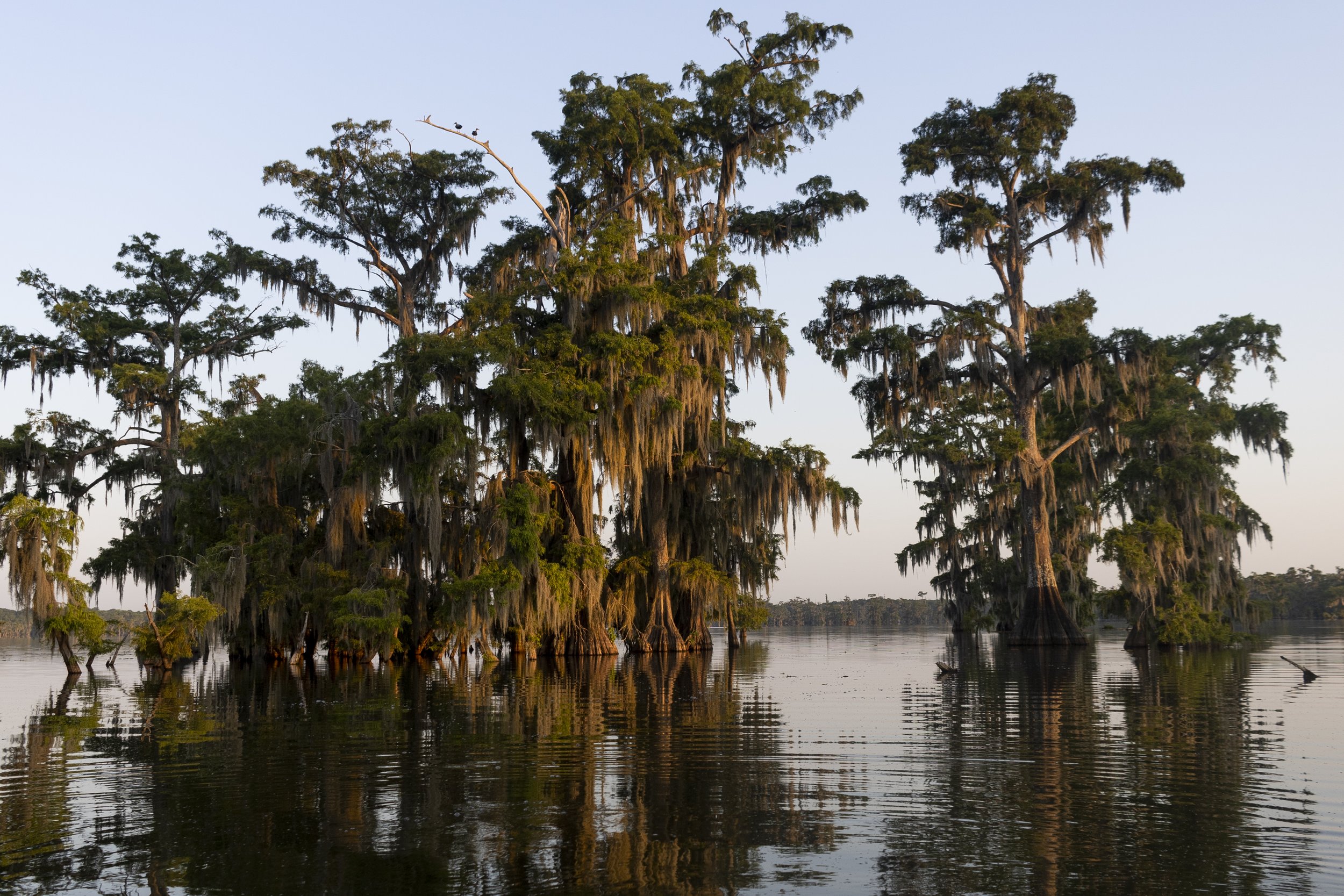
Lake Martin
Even in a state as teeming with picturesque waterways as Louisiana, Lake Martin stands out as a gem. Eight hundred acres of flooded cypress-tupelo forest, the broad, shallow lake features a wide-open area in the middle and shaded coves all along its perimeter. It’s a fisherman’s paradise, a kayaker’s playground and a birdwatcher’s absolute dream.
Yellow lotus
Birds love it there. In fact, the National Audubon Society has officially designated Lake Martin an Important Bird Area. Not only is it home to over two hundred species of bird—some year-round residents, others passing through—the area also functions as a world-class wading bird rookery, where wading birds breed and nest. Herons, egrets, ibises, cormorants, anhingas, kites and roseate spoonbills all make their home on Lake Martin . . . as do alligators, which you will inevitably spy at some distance from your watercraft, sinking below the surface of the water.
If you want to experience Lake Martin at its most sublime, go there in the early morning. Set off in your kayak just before sunrise and float among the moss-hung cypresses, listening to the bird’s dawn chorus. At that hour of the day it’s like being in a giant birdhouse, except the floor is made of water, and the walls are made of trees, and the roof opens up to a sky that becomes more golden every minute.
Spanish moss-draped bald cypresses
Like many other bodies of water in southern Louisiana, Lake Martin is both a genuine relic of the great swamp of the past and a product of human engineering. You might see it as Lake la Pointe on a map. Before 1950, that was the name of a much smaller lake that was there then. A ring levee was built around the original lake, which was permanently flooded to produce the lake we know today.
Bald cypress and swamp tupelo
Cypress Island Preserve, of which Lake Martin is the focal point and main attraction, is a mix of state-owned and privately-owned property extending far beyond the lake itself. Almost ten thousand acres in size, it’s the largest remaining tract of hardwood bottomland forest in the Teche-Vermilion watershed, a living link to a disappearing past. The preserve can also be explored by foot or by car. A two-and-a-half-mile walking levee trail is open from fall to spring, and a drive down Rookery Road can be enjoyed any time of the year.




